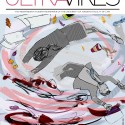
Every year, at the conclusion of the LSUC November Toronto recruitment process, Ultra Vires conducts two surveys: one of U of T students who were eligible to participate in OCIs and the other of participating employers. These surveys provide Ultra Vires with valuable insights into both hiring and the makeup of the Faculty of Law student body. All the information contained in this section is the result of one or both of these surveys.
We made a few changes this year. For one, we have included more employers in the hiring list, including more small firms and more government offices. The addition of new employers makes comparison of hiring numbers with prior years less straightforward. Although we have recorded a total of 420 students hired for summer 2016, compared to 399 total students for summer 2015, the employers from last year’s list only hired 384 students. We have included new employers accounting for an additional 36 positions this year. For example, the Department of Justice Ontario Region and the Public Prosecution Service of Canada hired nine students this year and was not recorded in last year’s numbers. The other newcomers are: Epstein Cole; MAG offices other than Crown Law Office – Criminal; Mathews, Dinsdale & Clark; and Paul, Weiss. In any event, the numbers are well within the range established in the past five years, and the numbers cannot be fully understood without the hiring numbers for first-year summer students (to be completed at the end of February, 2016).
As for the performance of individual law schools, there are no major changes. The percentage of students hired from each school’s class was within four percent of last year’s numbers. Windsor saw the single largest bump, from 26 to 40 students hired, although its class size also increased from 228 to 248.
We also added some new questions to the student survey, including questions on mental health and whether respondents attended private or public high schools.
Because not all eligible students opt to complete the recruitment survey, the data contained in this section should be interpreted with caution. Response rates were high—170 out of a class of approximately 200. However, there is reason to suspect that response rates are not uniform. In particular, the statistics indicate that students who had received a job during the 1L recruitment were less likely to complete the survey. A comparison of the Employer
Survey with the Recruitment Survey also indicates that students who had not received an offer were less likely to respond to the recruitment survey.
In previous years, Ultra Vires has conducted a statistical analysis of the Recruitment Survey to identify factors most closely correlated with hiring.
This year, Ultra Vires has opted not to publish the factors significantly correlated with hiring. Due to a bug in the Recruitment Survey, insufficient grading data was collected for Ultra Vires to be confident that any one variable is independently significant. There is, however, no reason to believe that the factors identified in previous years are no longer significant.
Notwithstanding the lack of statistical analysis this year, much of the most valuable content in the recruitment issue is qualitative. Many students take the time to give thoughtful accounts of their experience in the process, for which we are tremendously grateful, and that we hope proves helpful to future students. Additionally, the data on class demographics always proves interesting. For example, while the median household income in Canada was $76,000 on the 2011 Census, 71% of respondents reported parental income above $100,000.
Thank you to everyone who took the time to complete our survey. We really appreciate it, and we hope that everyone who finds this helpful in the recruitment process next year participates in Ultra Vires’ 2016 recruitment survey!






